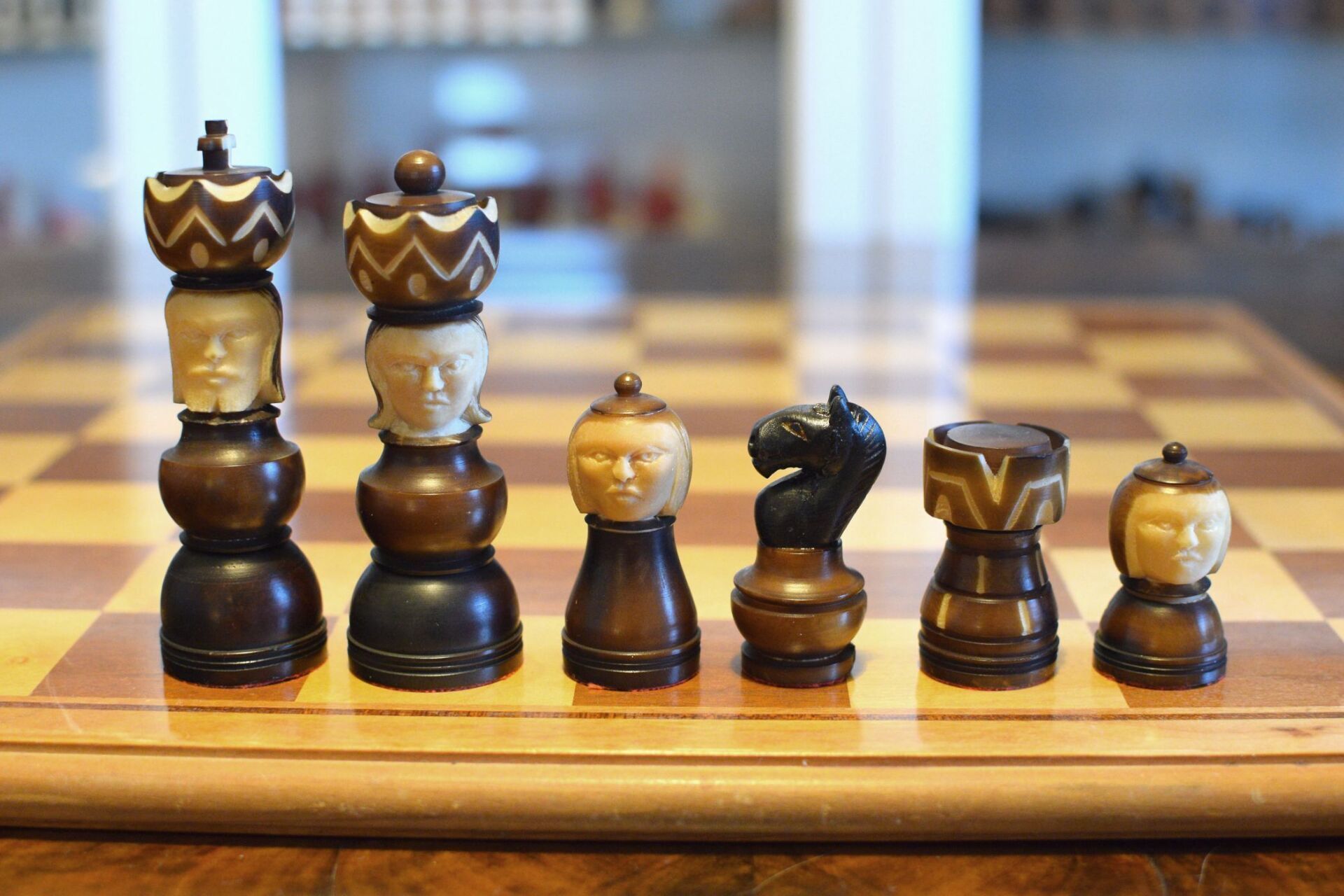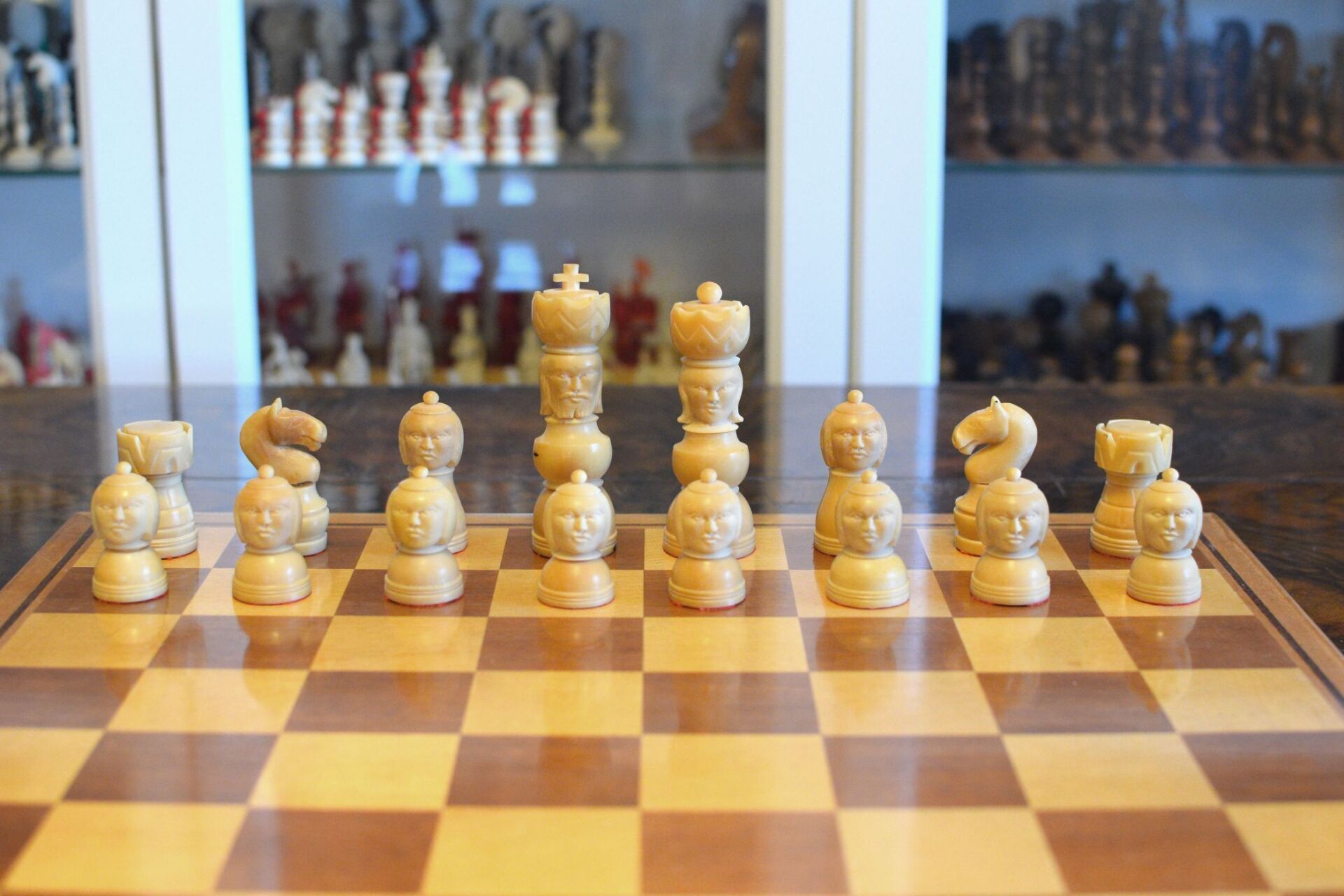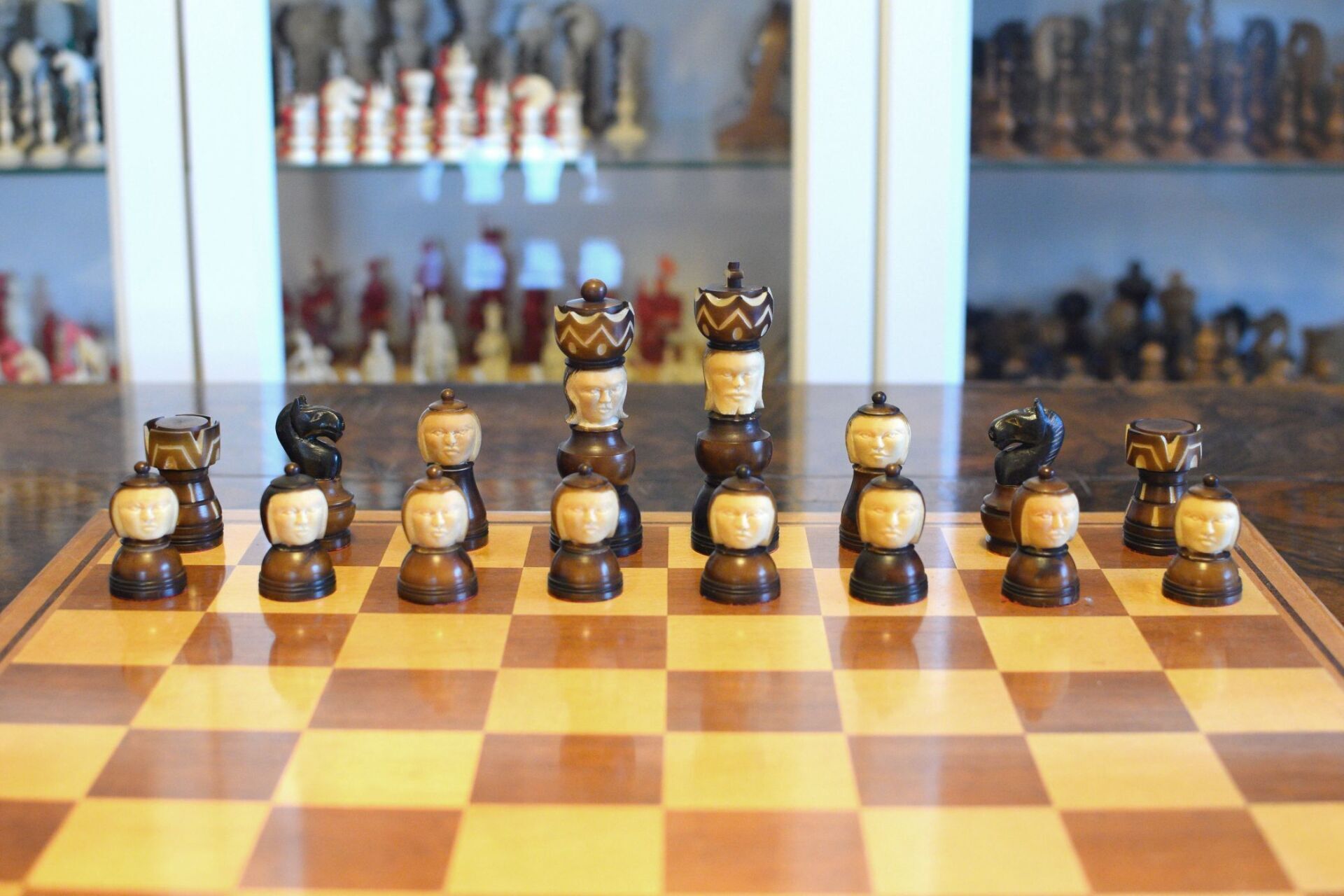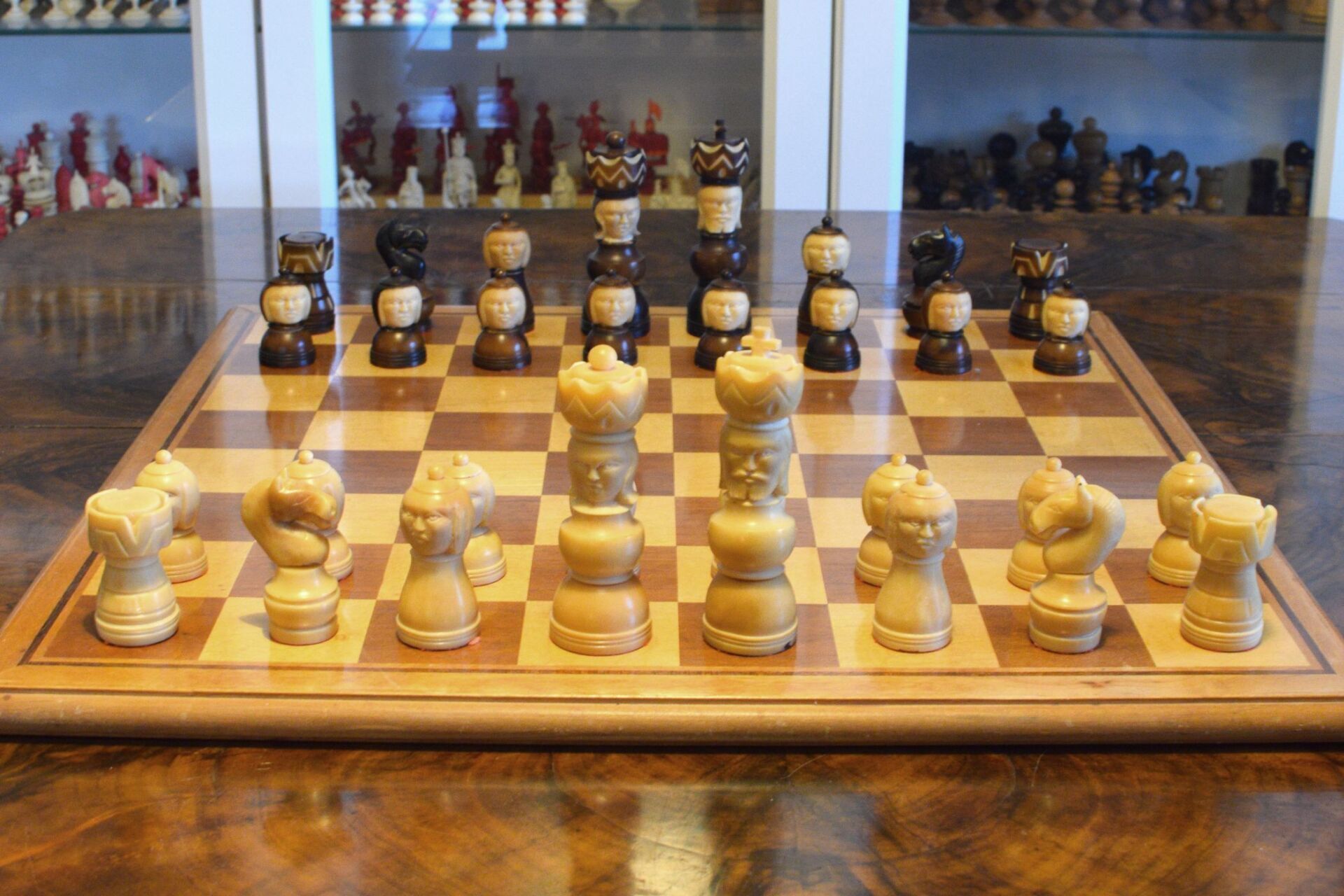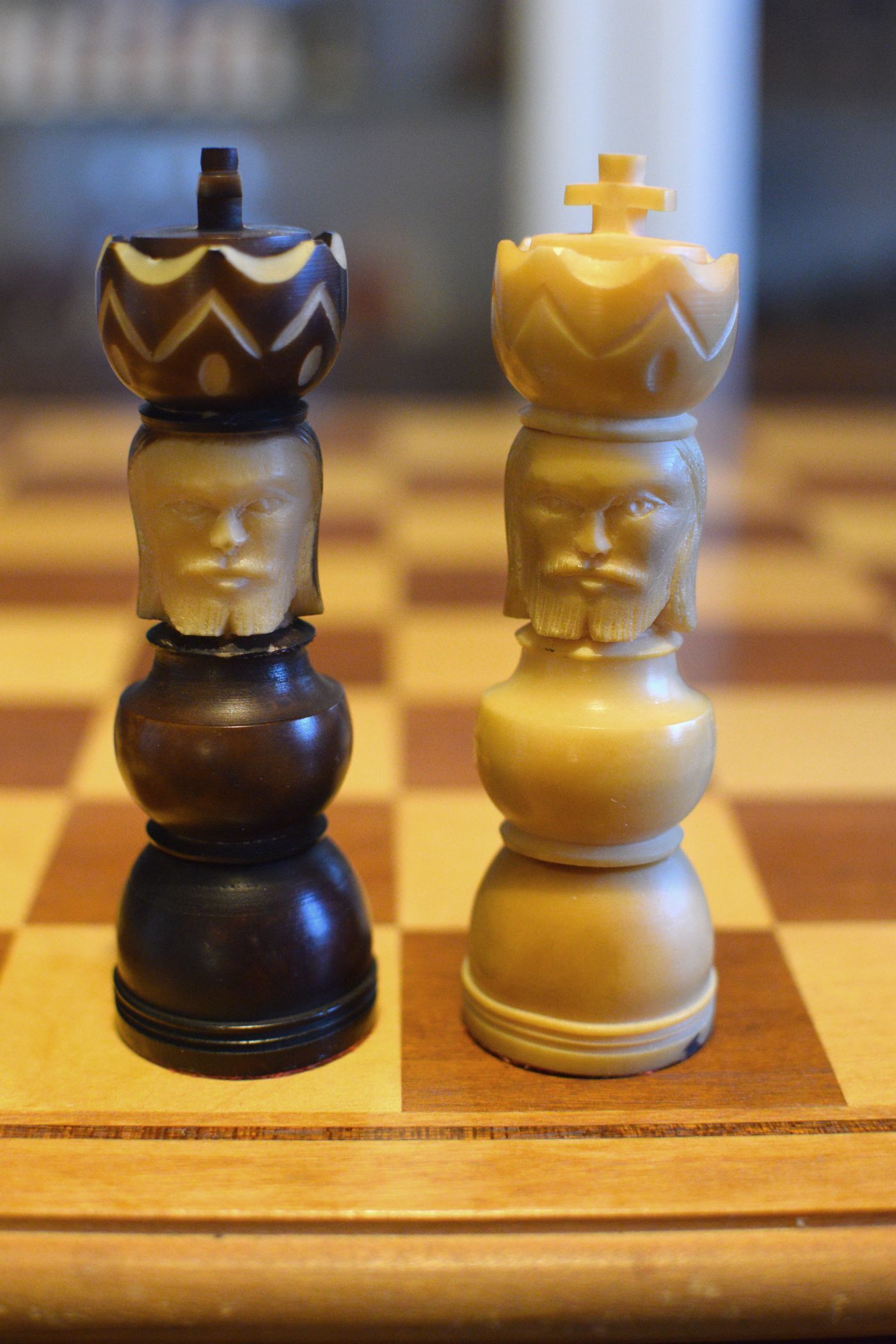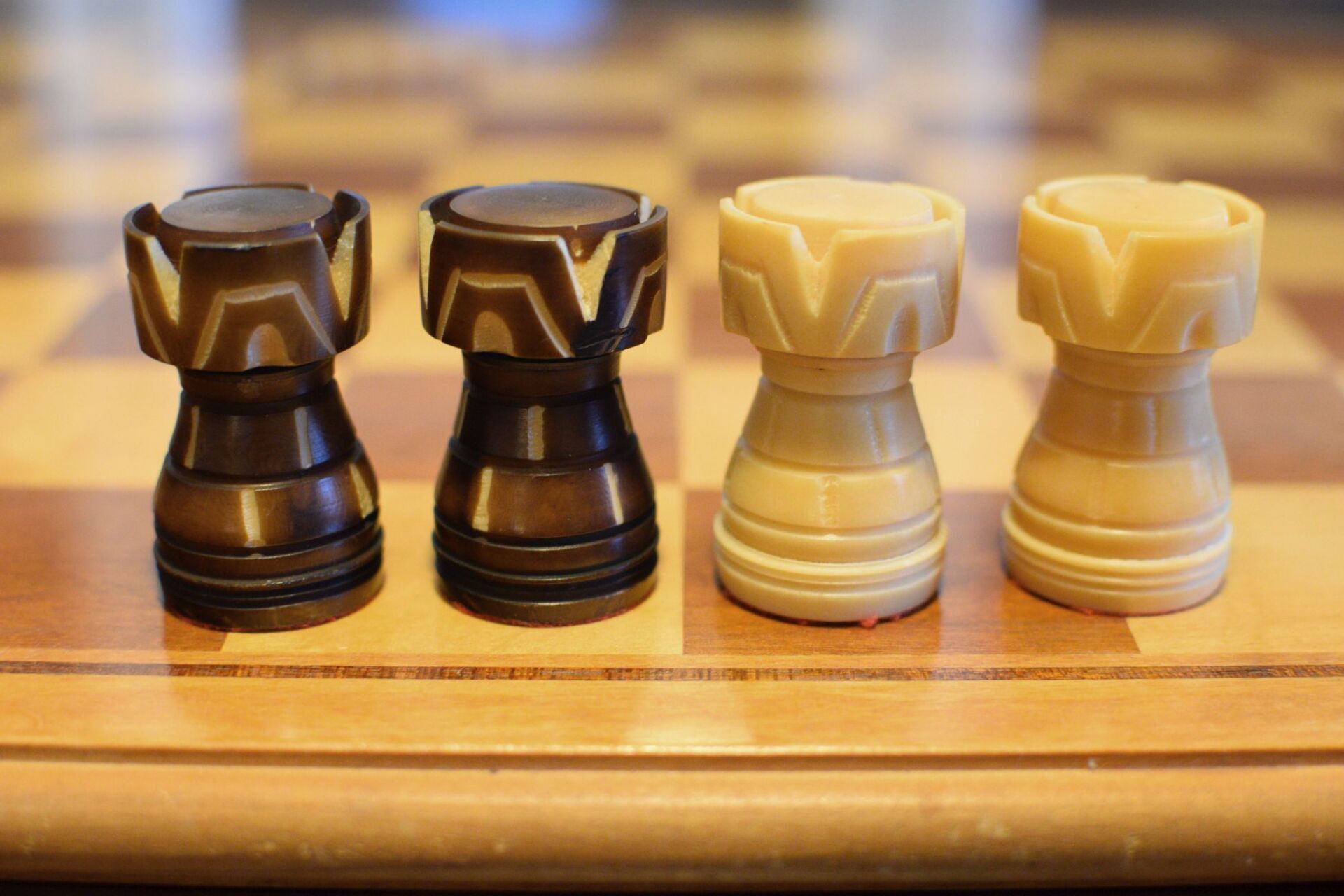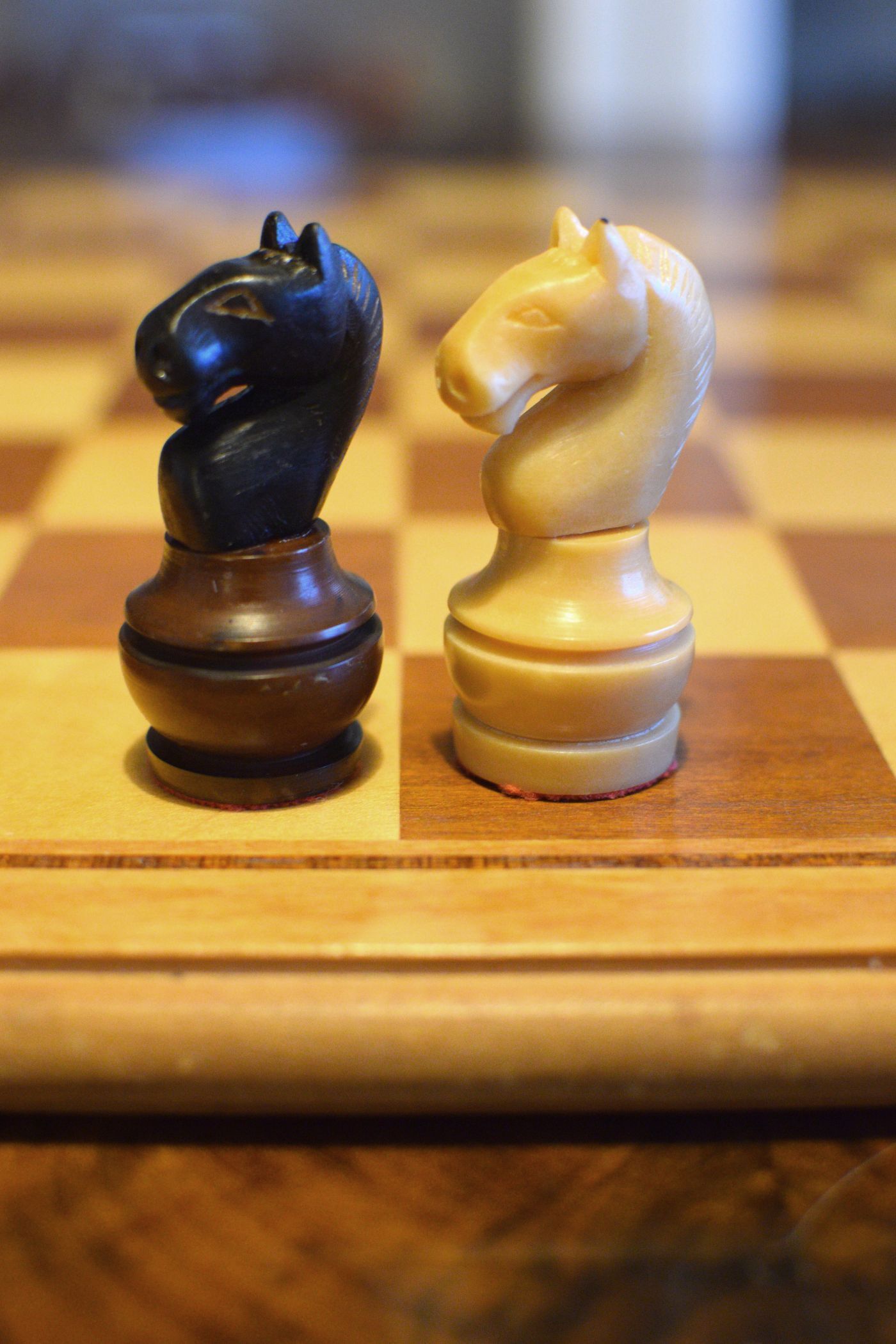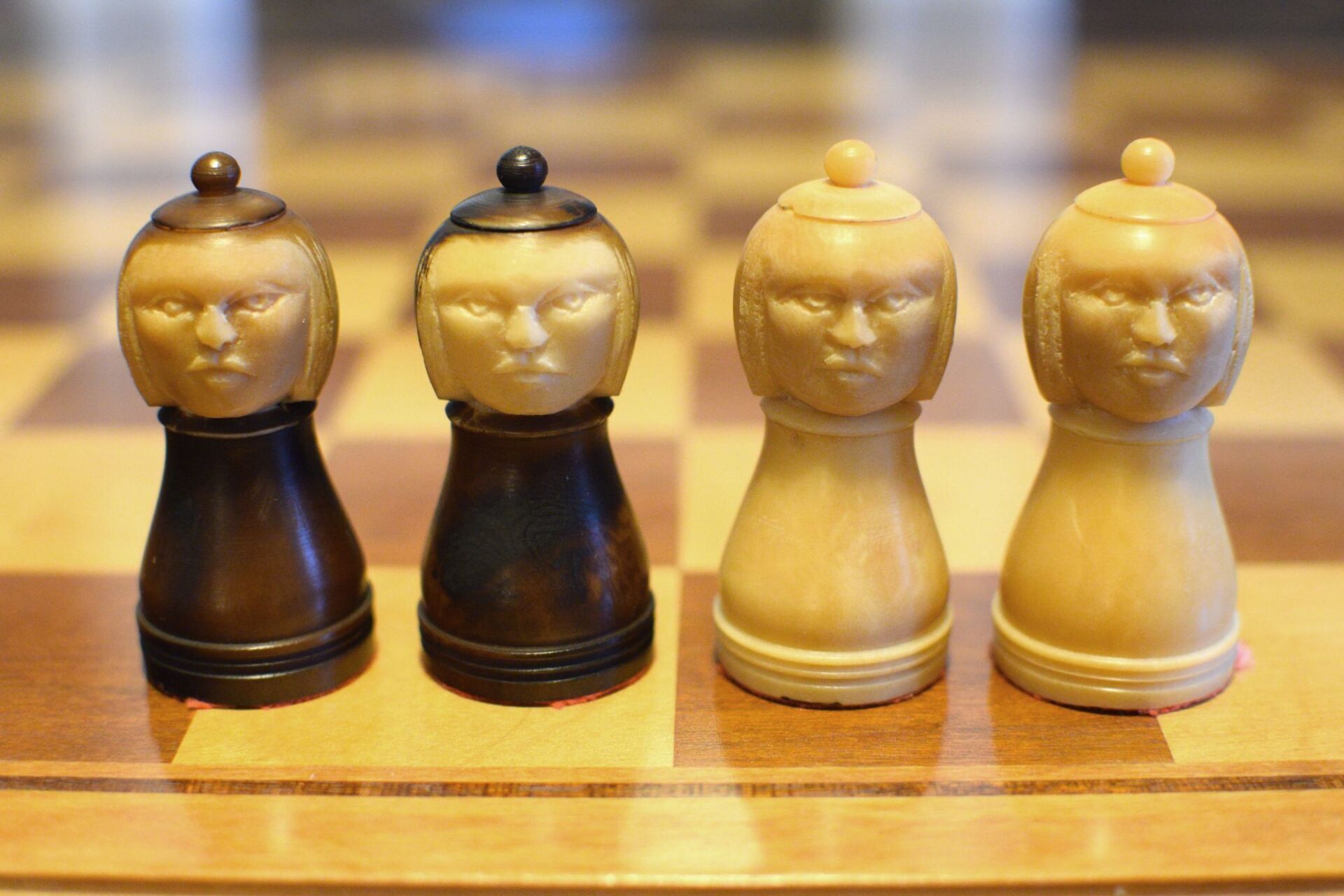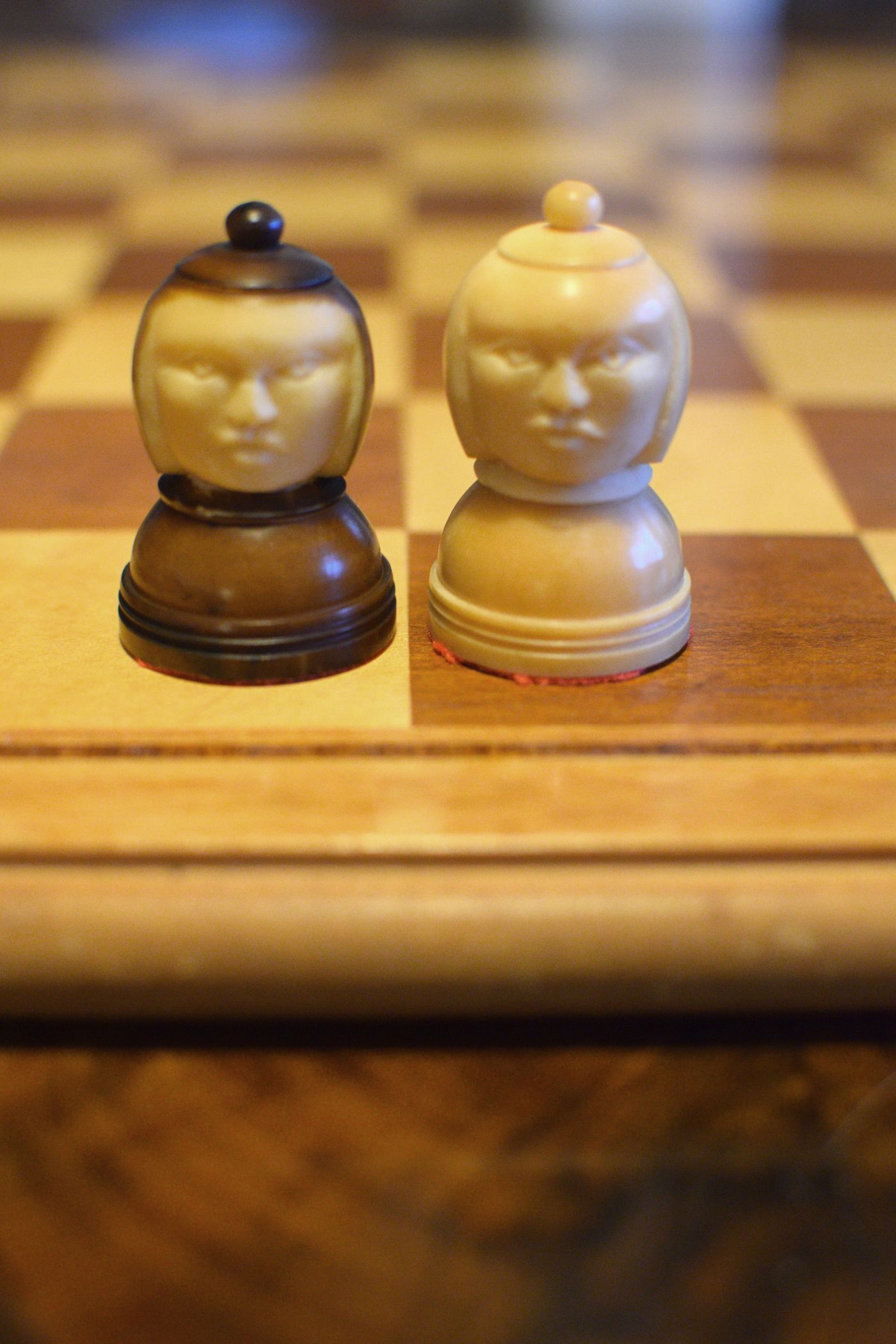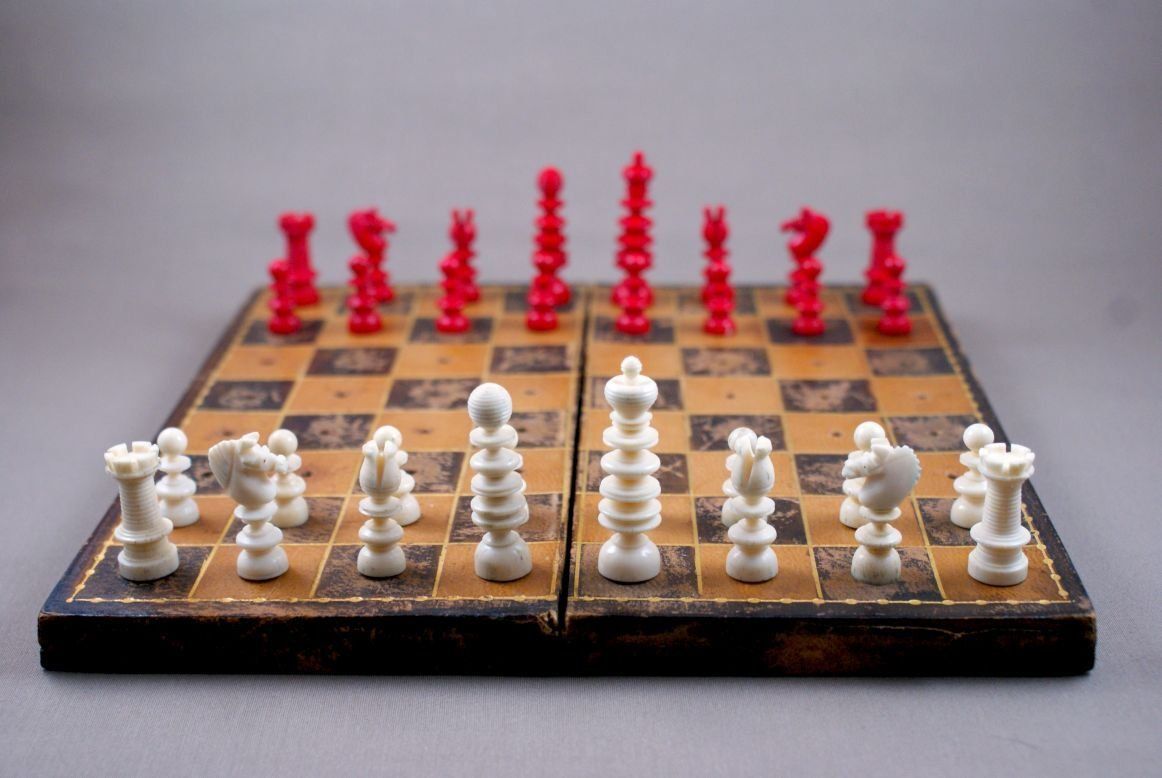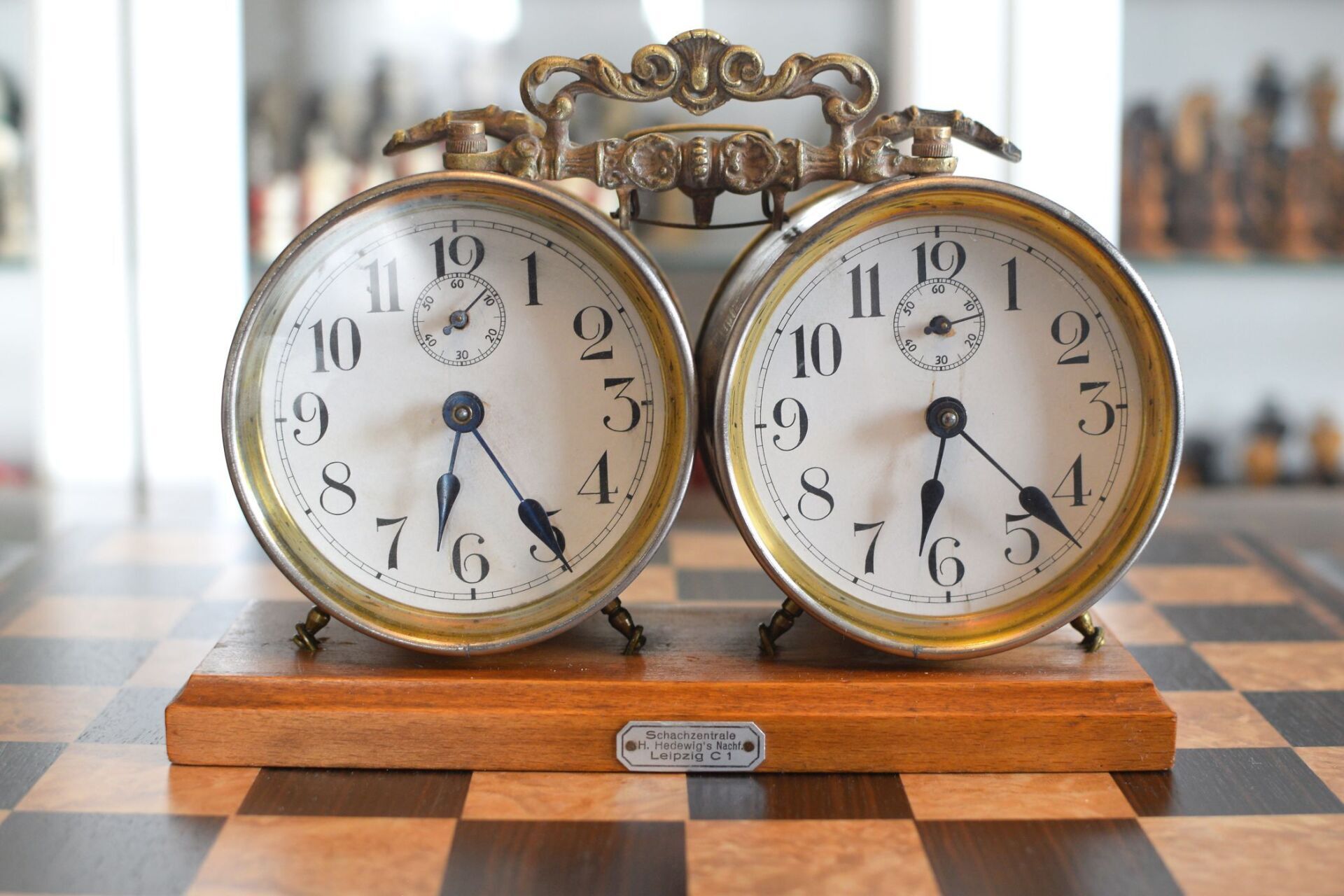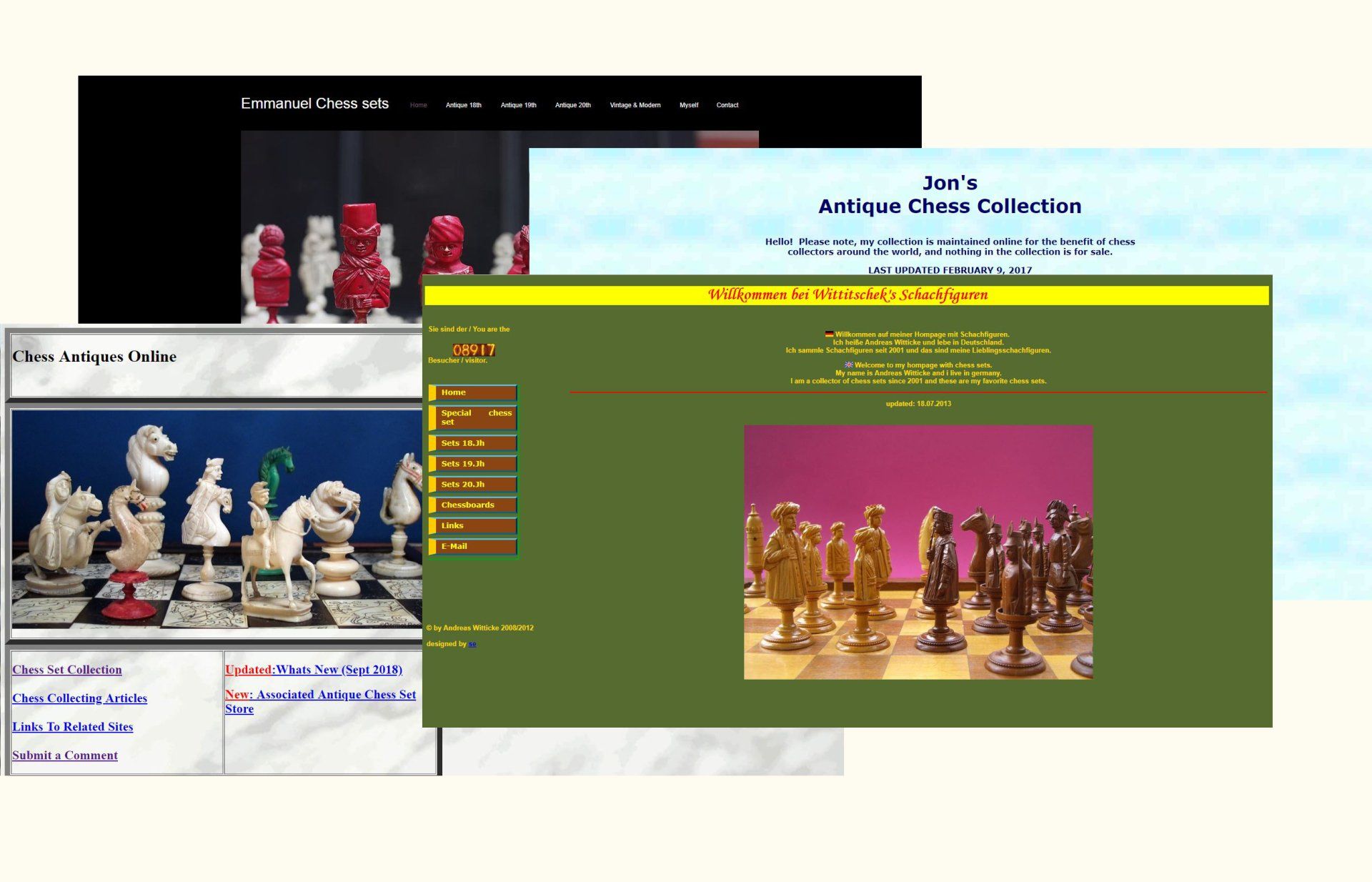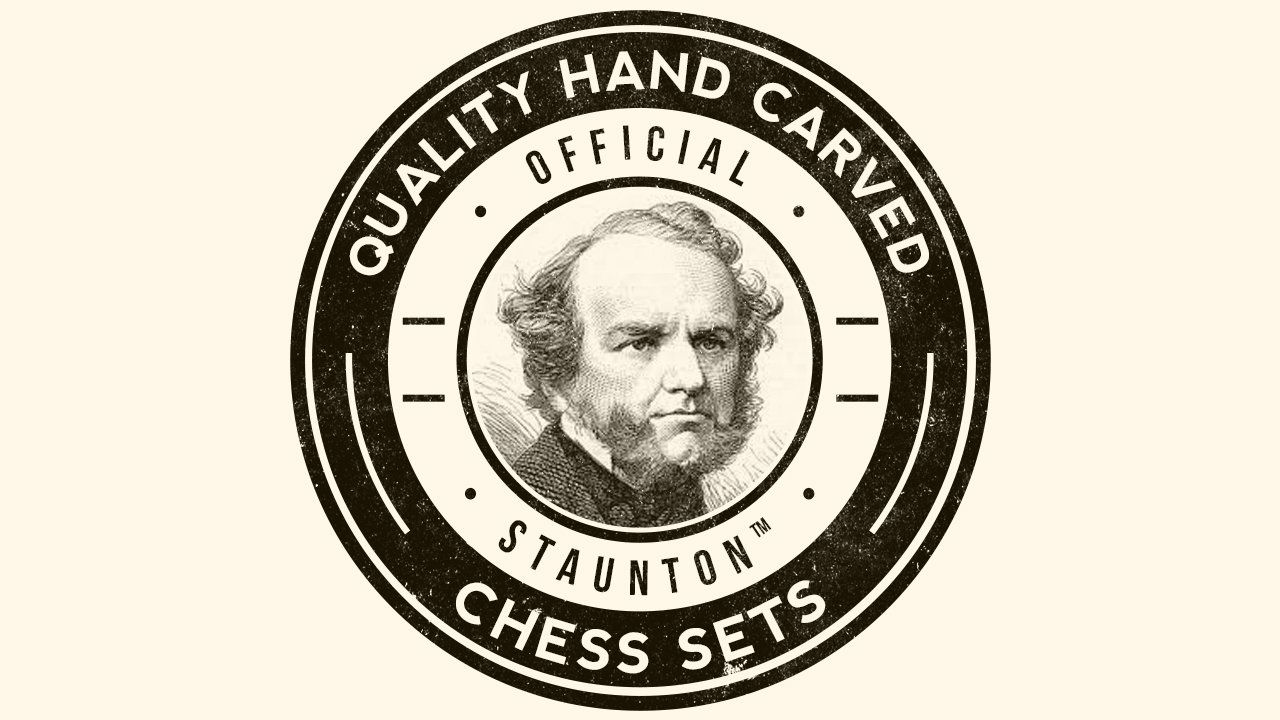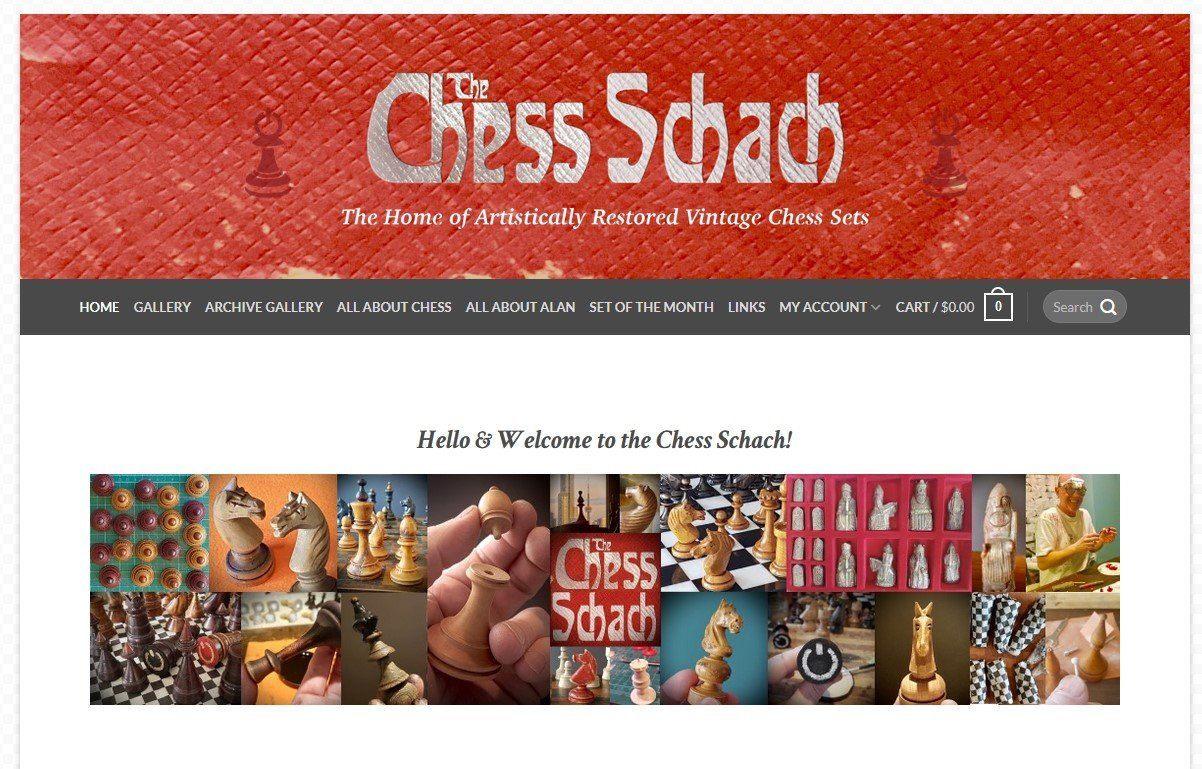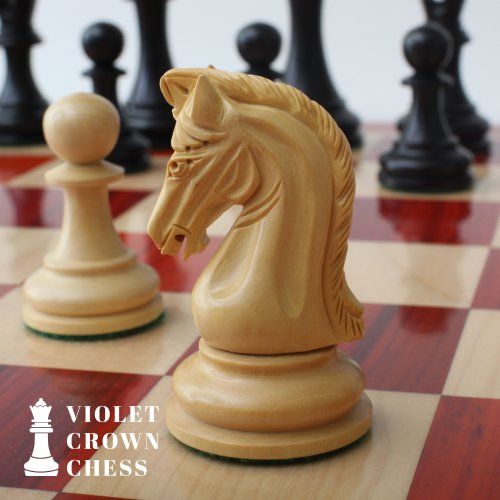Ecuadorian Figural Tagua Nut Chess Set, 1970's
A figural chess set made in Ecuador in the 1970's. The pieces are carved from tagua nut, which is the endosperm of certain palm trees, which are found in Central and South America and are particularly widespread in Ecuador in the area of the Upper Amazon. When dried, the tagua nut's have a medium size of 5-6 cm and an average density of around 1,200 kg /m³ , which corresponds roughly to the density of bones or elephant tusks (which again is the reason why these nuts are also referred to as "vegetable ivory"). In this state the nuts can be worked mechanically in every conceivable way, be it by sawing, milling or turning. In the 19th and early 20th centuries the material was popular for the production of buttons, but also for playing dice, knobs for knives and walking sticks, pipe bowls and, last but not least, chess pieces. Japanese netsuke were also often made from tagua nut. However, the popularity of tagua nut declined rapidly after the Second World War, when it was increasingly replaced by newly developed plastics. However, in view of the ethical problems surrounding the use of animal ivory, there has been an increasing demand for this wonderful material again in recent years.
The chess pieces shown here are relatively large for those made of tagua nut. In particular the larger pieces, like the kings and queens are too large for being made of just one nut, which is why they consist of several parts that were assembled. The kings have a size of 10.25 cm.

